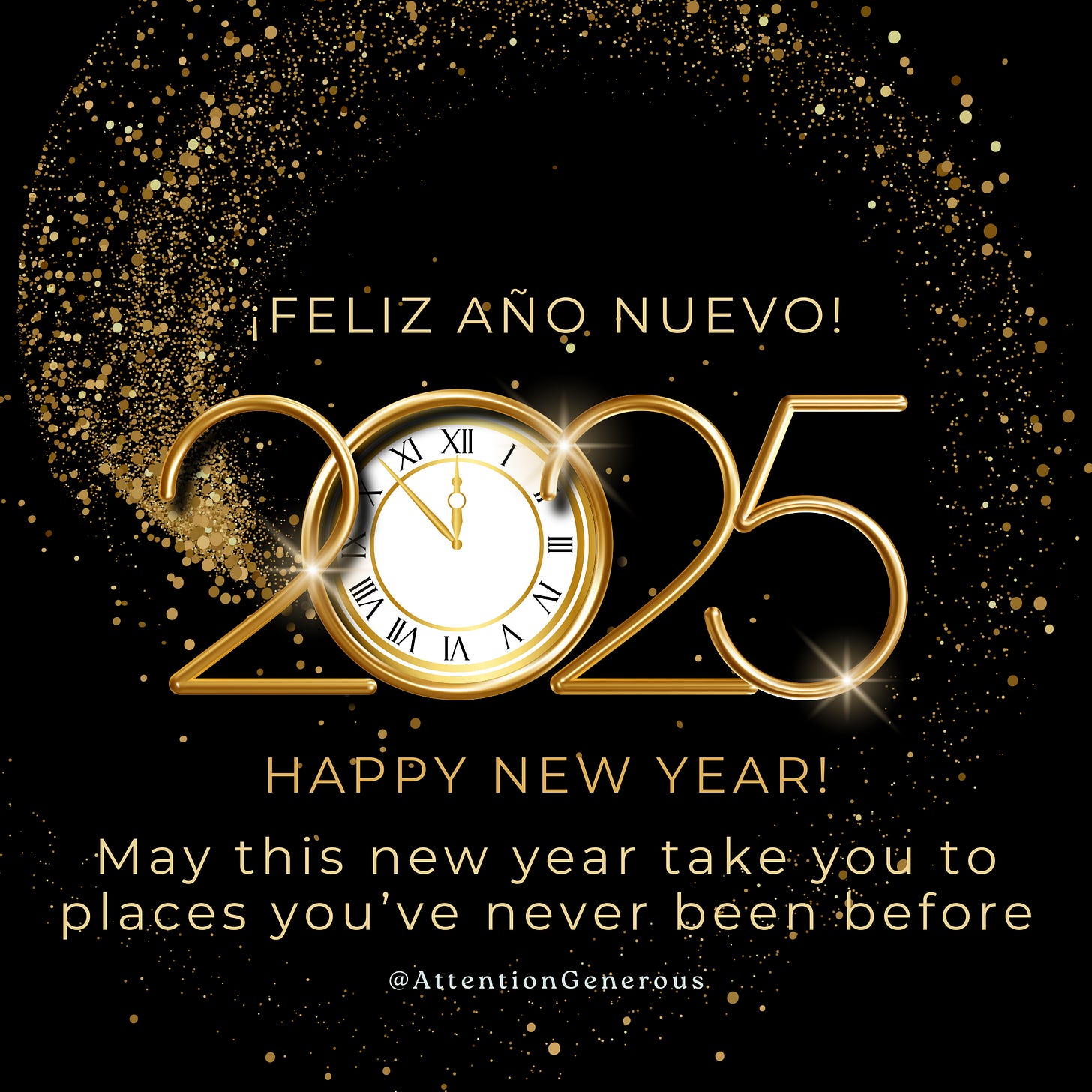“I don’t know, guys. It’s been an hour, and I still have no definitive answer whether anus and annus share a root in Latin.”
If you know me personally, that’s probably not a surprising sentence coming from me. If you don’t, well, let’s just say that’s one of the more normal things I’ve said. In my defense, I have a FB post I share every year to remind well-wishers that in Spanish, diacritics really matter for the New Year greeting. This year, I decided to zhuzh it up a little even though graphic design is neither a passion nor a basic competency of mine. Thanks to Ye Olde SparkleBrain™, I ended up down a rabbit hole about the etymology of the words at issue.
Before I invite you to be twelve years old and laugh with me at my masterpiece of visual design, let’s do some table-setting:
la virgulilla de la eñe, sometimes called a tilde, finds some roots in the Latin double-n (anno becomes año, canna becomes caña, etc.);
Pantone chose diarrhea as the color of the year for 2025;
autocorrect changed “Wishing you a prosperous and healthy 2025” to “Wishing you a preposterously healthy 2025” too many damned times to count today; and
being able to find levity in spectacularly grim circumstances makes you the “personality hire” of your friend group. Or at least that’s what I tell myself to forgive myself for how much I’ve been avoiding my phone during the formless, timeless, pantsless week
ishbetweenwhen I mentally checked out of workNoche Buena and New Year’s Eve.
Okay, now we are ready to sit:
This is your annual reminder that if you'd like to share wishes for a good new year in Spanish, you want to make sure there is a tilde in año
. . . otherwise you'll be wishing everyone a happy, healthy, and prosperous new anus.
Feliz, frondoso, y próspero año nuevo, friends. There will be joy, if we make it.
Practice makes progress.
XOXO





What a chuckle! And fairly in all health blessings may we proceed both with a happy new year and a healthy anus too. Yes let’s to making sharing amplifying joy!